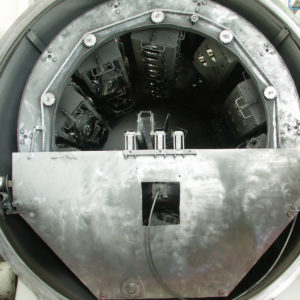Lean Manufacturing
For several years we have been implementing Lean Manufacturing philosophy and tools successfully.
Lean Manufacturing is business philosophy whose implementation
enables to make more and more using less and less. Lean philosophy (lean thinking) is based on five lean principles
- precisely specify value for a specific product (Specify Value),
- identify value stream for every product (Identify the Value Stream),
- assure value flow without disturbances (Flow),
- let the customer pull values from the producer (Pull)
- aim at perfection (Perfection).
Value
Starting point for lean thinking is the value which can be defined only by the final user. The value is created by the producer. From customer’s point of view it is the only reason for existence of producers.
Lean thinking must be started with an aware attempt to define precisely the value in relation with specific products, having specified possibilities, offered at specified process, as a result of a dialogue with specified customers.
In a nutshell, precise defining of the value is the most important first step of lean thinking. Delivering wrong product or service in a good way on time is muda.
Identification of value stream
Value stream is a set of all specified activities required to conduct specified product through three critical tasks of every business management:
- task consisting in solving problems which occurred at the moment of concept creation, through a detailed project and technology establishing to production start;
- task consisting in information managing; task starts with order receipt, goes through establishing detailed production plans, up to delivery;
- task of actual transformation, consisting in processing of raw materials to the finished product relayed to the customer.
Identification of the whole value stream for every product (or family of products) is the next step of lean thinking. This step is rarely taken by companies, but it always reveals a huge quantity of muda.
Analysis of value stream shows that within value stream there occur three types of activities:
- some of activities constitute the value,
- many other activities do not constitute the value, but they are inevitable in current technology and existing production means (muda of the first type),
- many additional activities do not constitute any value and they can be eliminated immediately (muda of the second type).
Flow
When value is determined precisely and value stream for every product is traced in cooperation of all parties involved in lean undertaking and all waste is eliminated, there comes a time for the next stage in lean thinking – making that the remaining steps which create the value constitute a flowing stream.
At this stage a basic problem is that thinking in categories of a flowing stream is in contradiction with intuition; for majority of people it seems obvious that work should be organised with division into departments and batches of goods.
Pulling
The effect of switching from organisation based on lots, turns and batches to continuous value flow is radical shortening of time from the moment of concept creation to product lunching on market, from the moment of sales contract signing to delivery and the time needed for processing of raw material into the finished product.
It brings about a single cash inflow as a result of stock reduction. It also accelerates return of the money spent on investments.
Ability to design, plan production and to make exactly the product that is needed at the exact time when the customer needs it means that sales forecasting can be given up and there can be produced only items wanted by customers.
Perfection
When organisation starts to define value precisely and identify the whole value stream, it gives the effect that activities constituting the value for particular products flow constantly and let the customers pull the values. Something strange begins to happen.
All the involved people begin to understand that the reduction process of work expenditure, cycle time, needed place and cost as well as malfunction elimination is never ending process and the offered product is coming closer and closer to the ideal expected by customer. Reaching faster value stream always exposes hidden muda layers.
The stronger value is reached, the more obstacles on flow track we discover and we try to remove them. The most important stimulus for perfection is clarity. Indeed in lean system all – suppliers, sub-makers, customers, workers – may see everything and it is very easy to discover better methods of value creation.
Benefits
Dreaming of perfection is pleasant. Transformation of classic production – based on part batches waiting for their turn – into production based on constant flow, with effective pulling of products by customer will double productiveness within the whole system. It will also shorten the processing time by 90% and reduce stock by 90%.
Generally quantity of defected products received by customer and quantity of defected products during production decrease radically. Quantity of accidents at work also decreases. The time needed for launching new products on market will be shortened by half. A wider range of products coming from one family can be offered.
Thanks to kaikaku – first radical regrouping of value stream – there can be seen first benefits coming from implementation of lean philosophy. Then continuous improvement takes place, reached thanks to kaizen, on the way to perfection.
Generally companies which made a radical change double their productiveness again within a few years as a result of gradual improvements and at the same time they again reduce stock by half. They also reduce quantity of malfunctions and the time needed for order execution. Then, thanks to combination of kaikaku and kaizen, never ending improvement is possible.
Based on:
- Jaemes P. Womack, Daniel T. Jones: „Lean Thinking ”,
Free Press, New York, 2003 - Mike Rother, Jon Shook: „Lerning to See ”, LEI, Brookline, 2003


